Weekly Recap
Last week was a key week for the markets after the Federal Reserve kicked off its rate-cutting cycle with a bumper 50 basis points cut. At the same time as cutting interest rates for the first time in four years Federal Reserve chair Jerome Powell calmed any lingering concerns over the health of the US economy.
The Fed’s latest dot plot pointed to two more 25 basis point rate cuts this year, in November and December.
Following the outsized rate cut from the US central bank, the NASDAQ and the S&P reached record highs, and the Nasdaq 100 booked gains of 1.5%.
Meanwhile, precious metal gold reached an all-time high of 2600, boosted by the prospects of a lower interest rate environment and a weaker dollar following the rate cut.
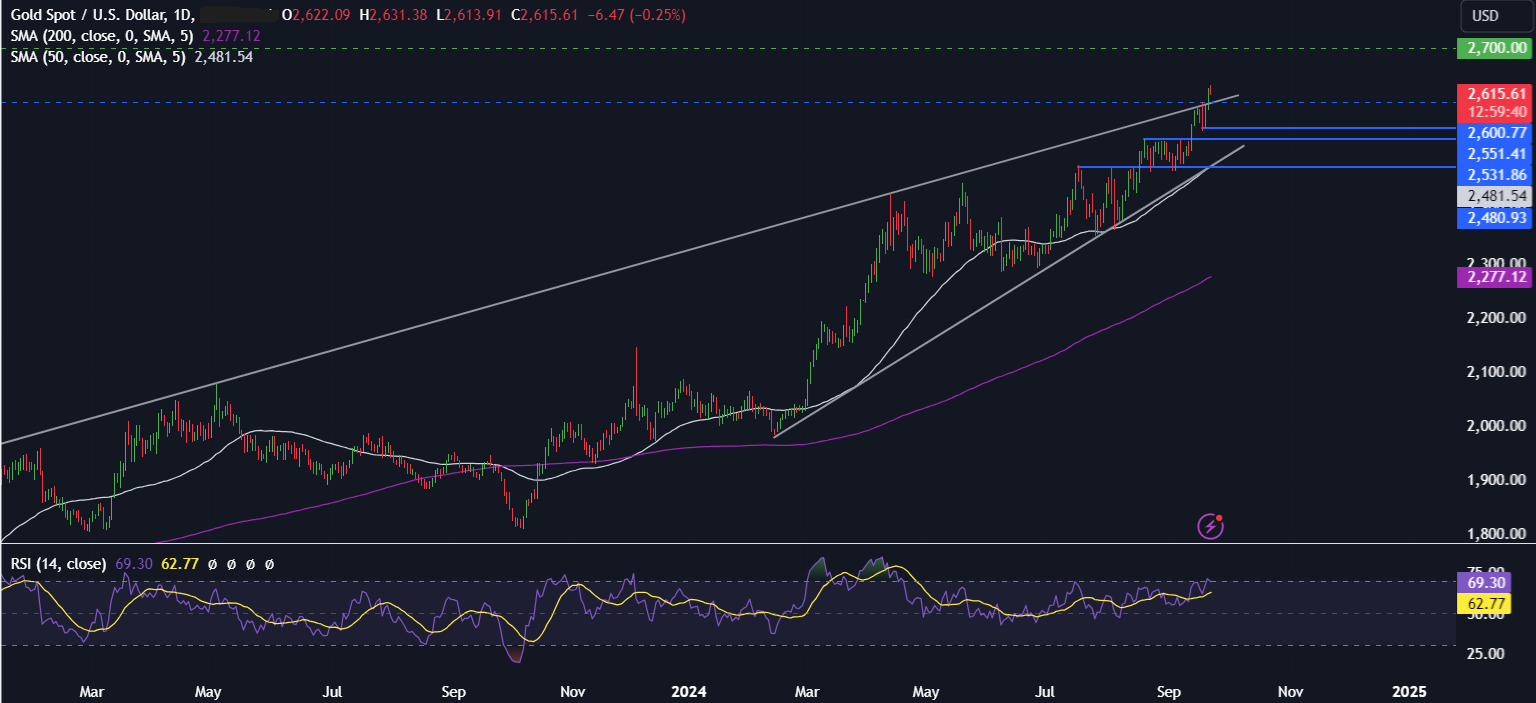
While the Fed was the central focus last week, the BoE and the BoJ also announced rate decisions. Both central banks left rates unchanged.
Last week’s data showed that UK core and service sector inflation remained sticky. The BoE warned that they were in no rush to ease rates. The BoE’s cautious tone compared to the Fed’s outsized rate cut boosted GBP/USD to a 2024 high.
Week Ahead
Eurozone PMIs
Eurozone PMI data are due to be released on Monday. Investors will be watching closely after last month’s disappointing PMI data suggested that demand will not recover anytime soon in the region.
Economists expect the composite PMI, considered a good gauge for business activity, to fall slightly to 50.6 in September, down from 51 in August. Delving deeper into the numbers, manufacturing activity is expected to contract at a faster pace, and the service sector is expected to see a slower pace of growth.
The data could be another setback for those expecting an economic rebound in the region as the manufacturing sector remains deep in contractionary territory.
Weaker-than-expected data could pressure the EUR/USD after the pair rose 0.8% higher last week towards 1.12, a three-week high.
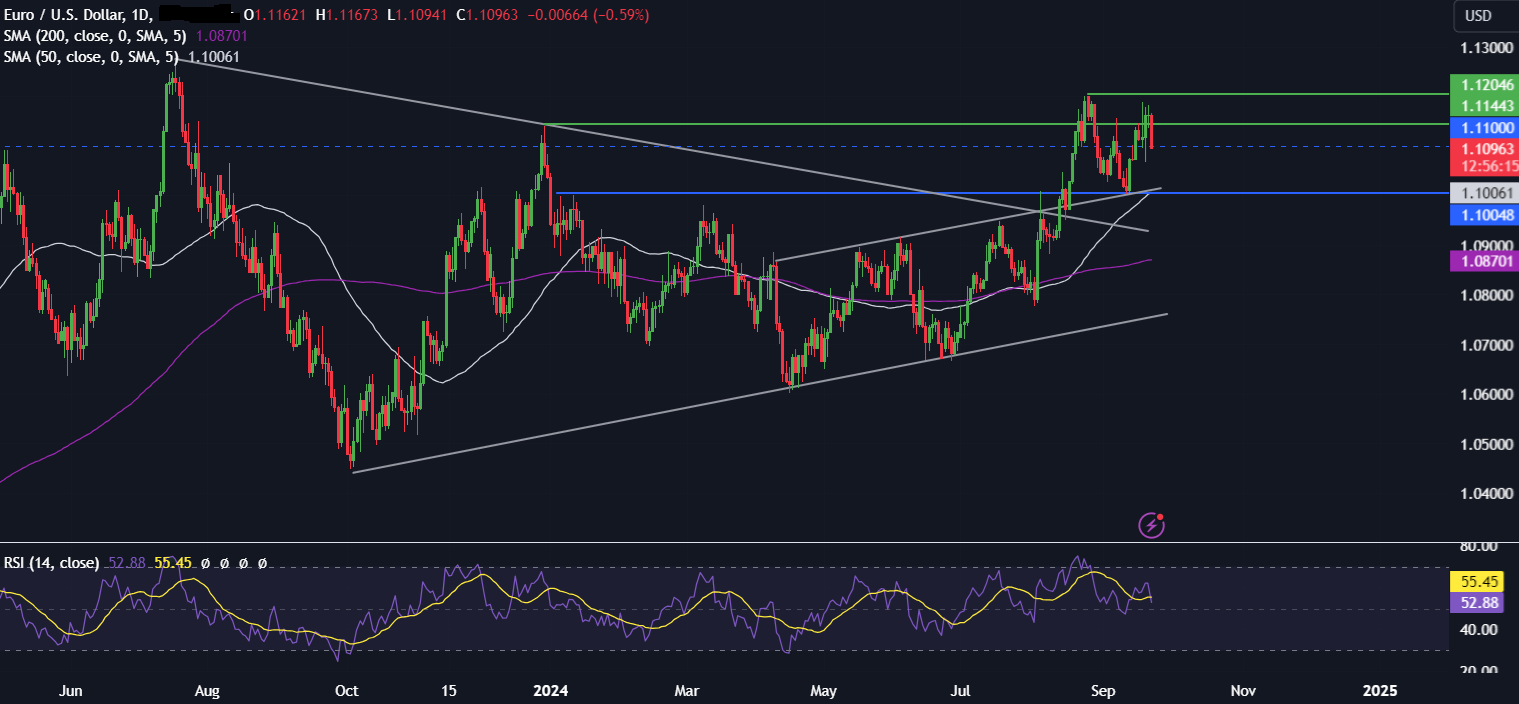
Meanwhile, the DAX briefly rose to a new record high above 19k. Weaker than forecast data could raise concerns over a recession in the eurozone’s largest economy and pull the DAX and the EUR/USD lower.
UK PMIs
UK PMI data will be released on Monday, and economists expect growth to slow slightly in September. The UK manufacturing activity is expected to ease from a 26-month high reached in August at 52.5 down to 52.3. Meanwhile, the service sector, the dominant sector in the UK economy, is expected to see activity grow at a slightly slower pace of 53.5 from 53.7 in July. Attention will be on services input prices after data last week showed that UK service sector inflation remained too sticky at 5.6% to warrant a rate cut from the BoE.
GBP/USD had risen to a 2024 high of 1.3340 on divergent Fed-BoE expectations. Robust UK data could drive GBP/USD higher.
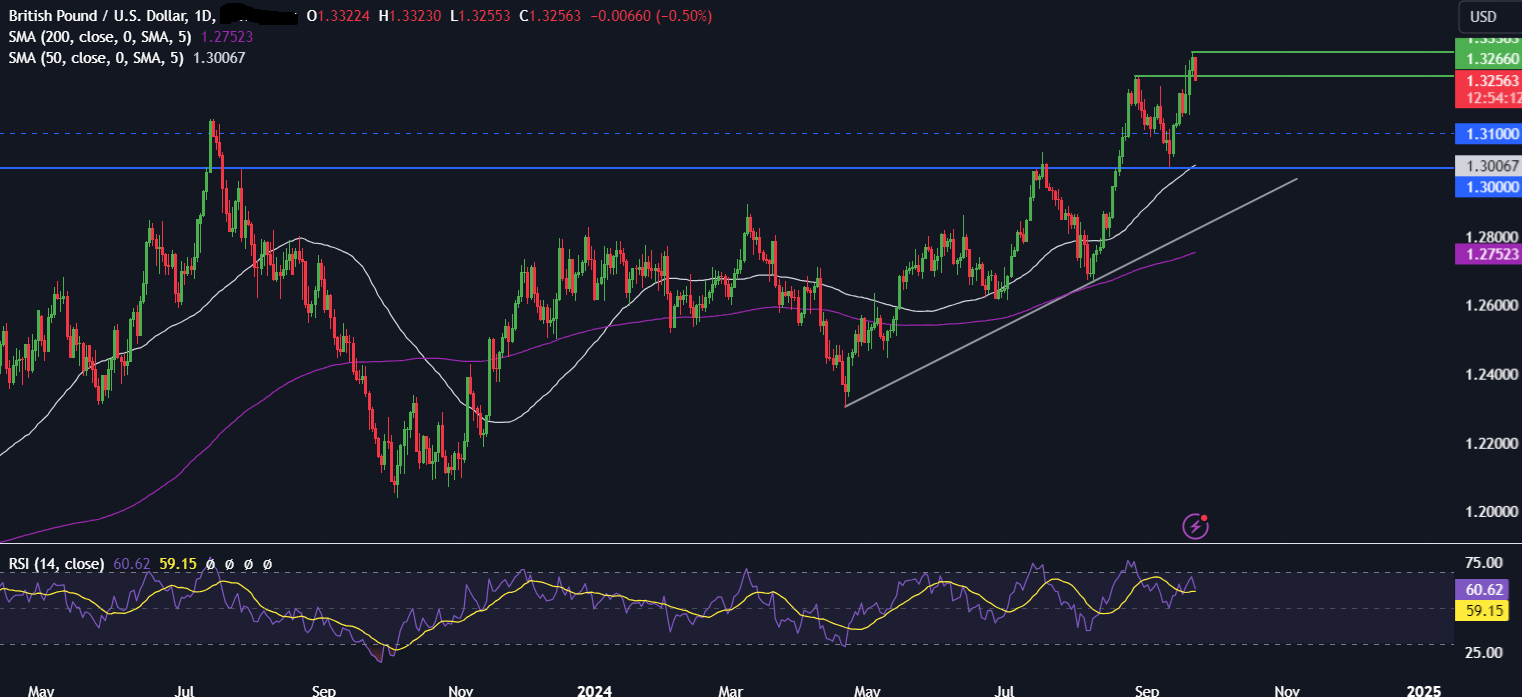
RBA rate decision
The RBA will announce its rate decision on Tuesday, September 24. The Australian central bank is expected to leave rates unchanged at 4.35% amid still high inflation, with the first-rate cut not expected until early next year.
Inflation was 3.5% annually in July but is still well above the RBA’s 2% – 3% target range. This and the strong jobs market leave little to no room for policymakers to reduce interest rates. The RBA is expected to lag behind other major central banks that have already started cutting rates, including the BoC, RBNZ, BoE, and now the Federal Reserve, which cut rates last week.
The RBA is expected to start its easing cycle next year with a 25-basis point cut in Q1.
As a result of the RBA – Fed monetary policy divergence, AUD/USD has risen to a 2024 high above 0.68. A hawkish-sounding RBA could help AUD/USD overcome 0.6839 and head towards 0.6870, the 2023 high.
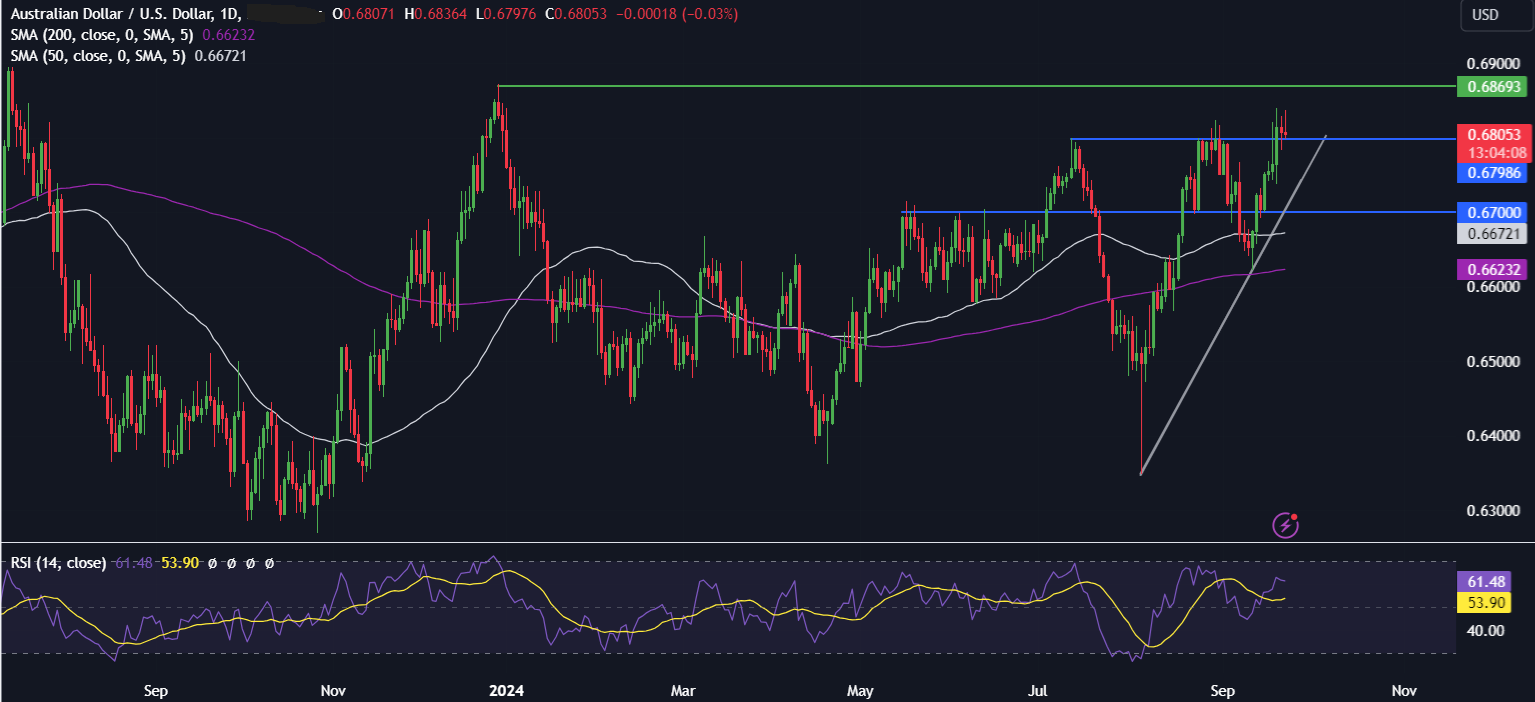
SNB rate decision
The SNB is expected to cut rates by 25 basis points, taking the policy rate to 1%. The market is also pricing in a 45% probability of a larger 50 basis point cut. The market has gained confidence that the SNB could opt for an outsized cut as inflation has cooled by more than expected. The last Swiss inflation release showed CPI declined to 1.1%, lower than the SNB’s 1.5% projection for Q3.
Furthermore, at the end of August, SNB’s governor, Jordan, said that the Swiss Franc’s continued strength had been hurting the Swiss industry. This could have potentially been a hint that the central bank may opt for a 50 basis point cut, particularly after the Fed’s outsized move.
A 50 basis point cut could steady the selloff in the USD/CHF, which is showing signs of bottoming out.
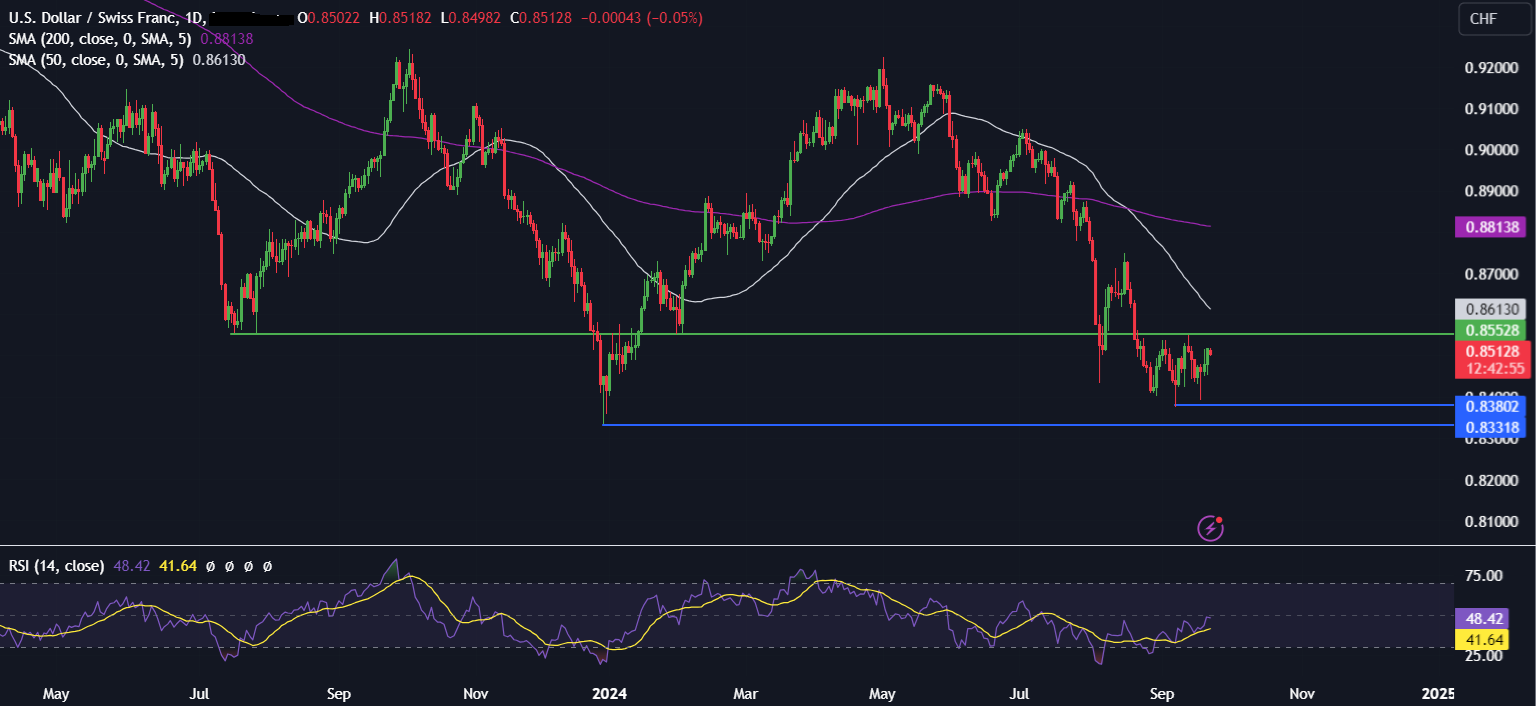
US jobless claims
US jobless claims continue to be one of the most important releases each week as they’re a timely indicator of the health of the US labor market. Given that the Feds’ focus is shifting to the US jobs market, jobless claims may provoke more of a reaction than in previous months.
Initial claims are within the 200k to 260k range, where they have been since 2022. While continuing claims have improved over the last few weeks after rising substantially across the summer.
Economists expect initial claims to rise to 225k, up from 219k the previous week.
Tokyo CPI
Tokyo core inflation (CPI) is expected to ease to 2.2% YoY, down from 2.4%. The Tokyo inflation gauge is considered a leading indicator for the national CPI, so it is considered more important for the market than the national figure.
The data comes after the Bank of Japan left interest rates on hold at the meeting on Friday and adopted a slightly more dovish stance than the market expected. The bank noted that given recent FX moves, there’s time to decide on monetary policy.
As a result, the yen fell across the week. USD/JPY jumped 2.2% last week after falling 3.5% in the two prior weeks. USD/JPY has recovered from an 8-month low and trades back above 140.00.
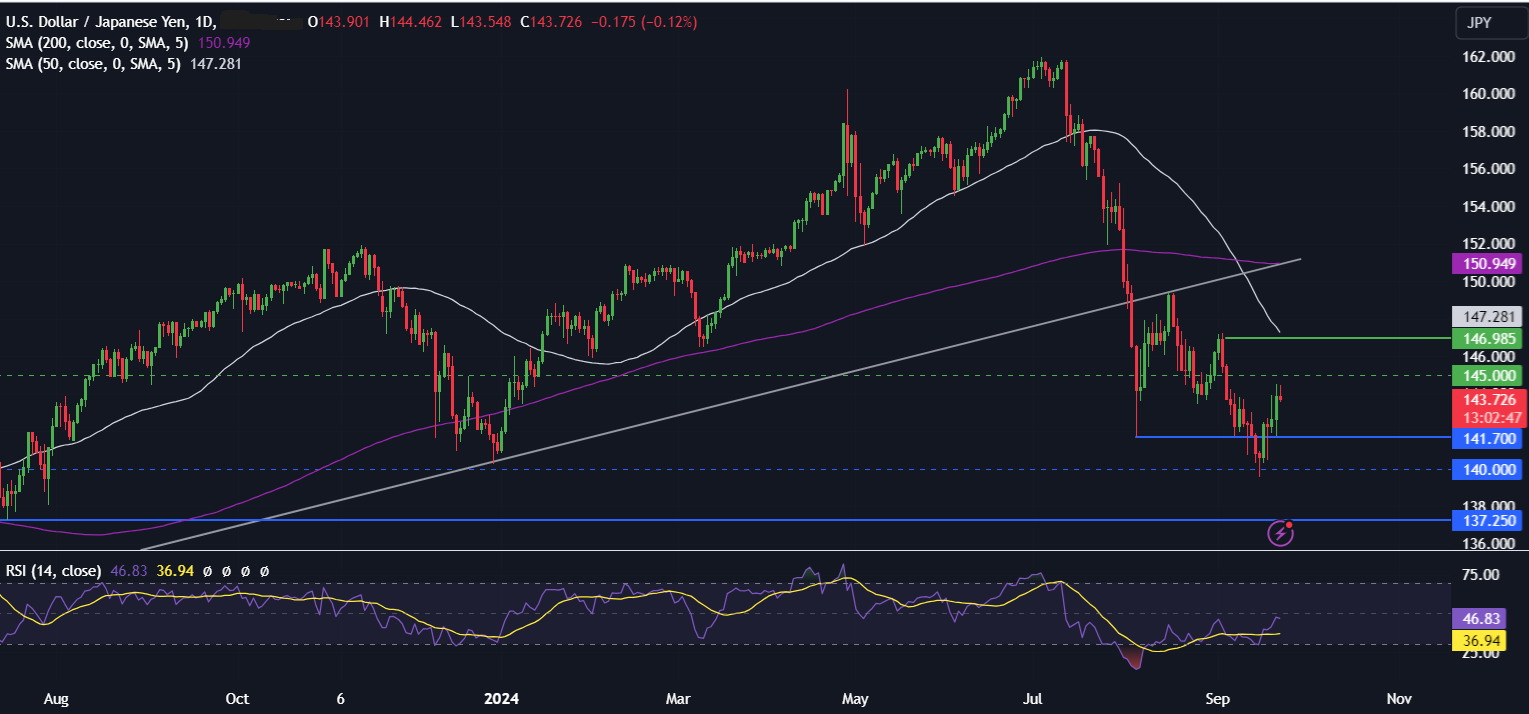
US core PCE
US core PCE, the Fed’s preferred gauge for inflation, is expected to rise to 2.7% YoY in August, up from 2.6% in July. The figure is expected to remain unchanged at 0.2% on a monthly basis. The data comes after the Fed has said that it’s confident that inflation will cool towards the 2% target, and the main focus for the Fed shifts away from inflation and towards the labour market. As a result, inflation data has lost some of the importance it had previously in terms of market reaction.
Furthermore, several inflation data readings and non-farm payrolls are to be released ahead of the November FOMC meeting, so the data may not provoke a clear reaction.
US S&P 500 trades around an all-time high above 5700. Stronger-than-expected core-PCE or a very weak reading could hurt sentiment, and stocks could also fall under those circumstances.
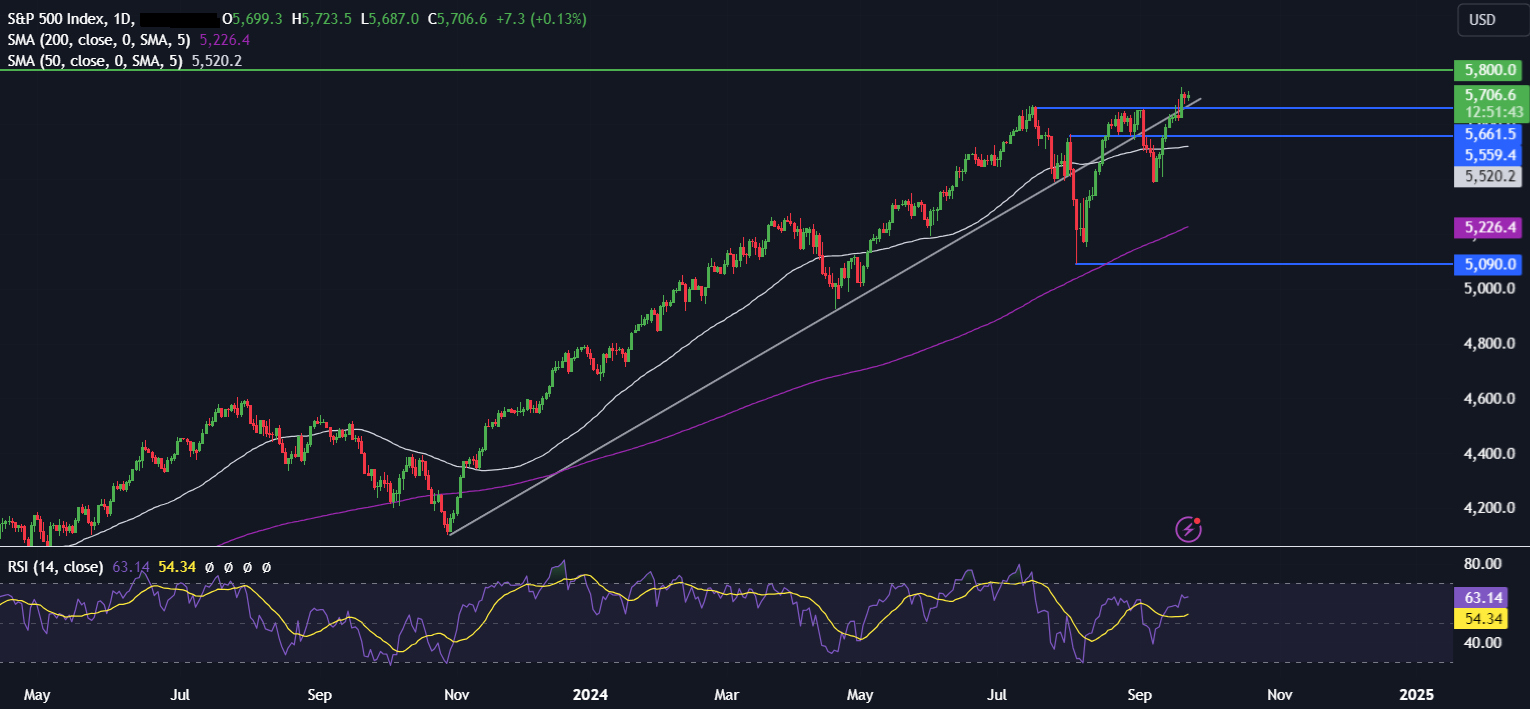
The content provided here is for informational purposes only. It is not intended as personal investment advice and does not constitute a solicitation or invitation to engage in any financial transactions, investments, or related activities. Past performance is not a reliable indicator of future results.
The financial products offered by the Company are complex and come with a high risk of losing money rapidly due to leverage. These products may not be suitable for all investors. Before engaging, you should consider whether you understand how these leveraged products work and whether you can afford the high risk of losing your money.
The Company does not accept clients from the Restricted Jurisdictions as indicated in our website/ T&C. Some services or products may not be available in your jurisdiction.
The applicable legal entity and its respective products and services depend on the client’s country of residence and the entity with which the client has established a contractual relationship during registration.




